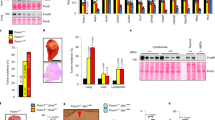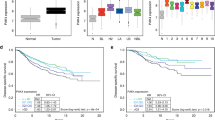Abstract
Expression of two types of transactivation-defective E2F1 mutants in human Rb−/− tumor cells led to an increase in the proportion of cells in the G1 phase of the cell cycle as determined by FACS analysis. Experiments revealed two different mechanisms of action. One mutant type induced a G1 arrest after the restriction point, with cells phenotypically at a cell cycle stage later than G1. The action of this mutant was, at least in part, dependent on specific DNA binding and was over-ridden by co-expression of its wild-type counterpart. The other mutant type, which is defective in DNA binding, slowed the G1 progression and restored a checkpoint for cell cycle withdrawal. The G1 phase withdrawal of these tumor cells allowed the initiation of skeletal muscle cell differentiation. Thus, E2F1 appears to have two different functions before and after the cell cycle restriction point. This report also may provide a basis for a gene therapy approach for certain human cancers.
This is a preview of subscription content, access via your institution
Access options
Subscribe to this journal
Receive 50 print issues and online access
$259.00 per year
only $5.18 per issue
Buy this article
- Purchase on Springer Link
- Instant access to full article PDF
Prices may be subject to local taxes which are calculated during checkout
Similar content being viewed by others
Author information
Authors and Affiliations
Rights and permissions
About this article
Cite this article
Qin, XQ., Barsoum, J. Differential cell cycle effects induced by E2F1 mutants. Oncogene 14, 53–62 (1997). https://doi.org/10.1038/sj.onc.1200809
Received:
Revised:
Accepted:
Issue Date:
DOI: https://doi.org/10.1038/sj.onc.1200809



